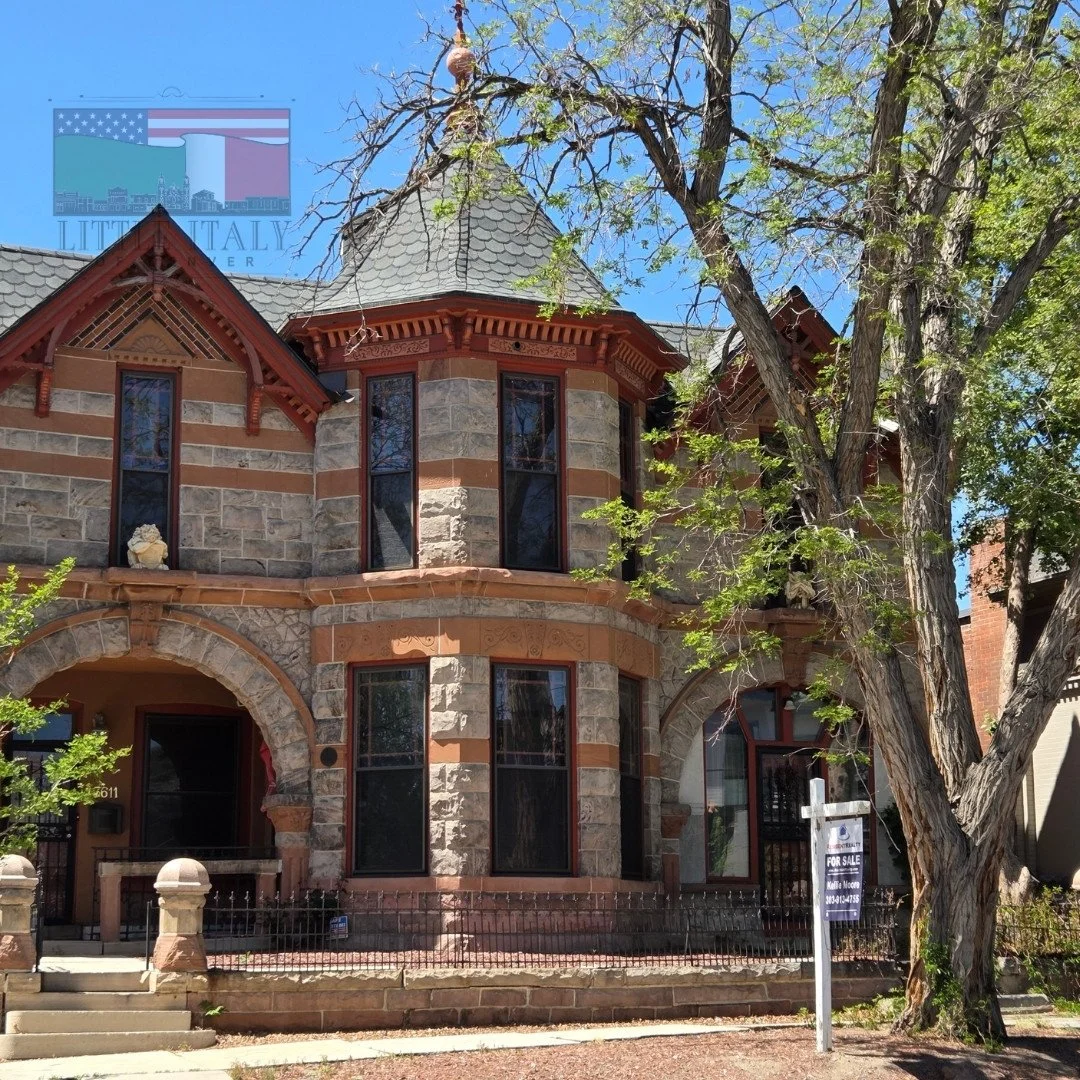The origins of Italians in Colorado can be traced back to the mid-1800s when Italy was in the midst of a revolution.
Il Risorgimento, a movement which sought to unify Italy into the nation we know today, forced some to leave the country to escape the wars. Others left because the United States promised gold and prosperity. This first wave of immigrants came mainly from northern Italy. They settled in mining towns like Leadville and Georgetown and in general, assimilated well into American culture.
The biggest influx of Italians to the United States came during the late 1800s through the early 1900s. These were mainly from southern Italy and they came to escape poverty. After Italy’s unification, the northern part thrived while the southern part suffered. The United States promised freedom and a shot at prosperity. Many came to Colorado because there was plenty of work in mining and railroading. Most of the Italians that stayed in Denver settled in an area between Union Station and the South Platte River, which became known as “The Bottoms.” It was an undesirable area filled with shacks, but it was close to their jobs. As Italians prospered, they moved west across the river into what is known as North Denver.
The Irish initially settled in North Denver and were the majority until Italians moved in. The two immigrant groups didn’t get along, but eventually the Irish moved out of the area and the Italians took over. Despite the ongoing threat of persecution due to religion and ethnicity, they established their own Catholic Church and set up numerous businesses such as newspapers, restaurants, and bakeries. They continued practicing traditions from the old country like baking fresh bread in outdoor ovens, drying sausage, and tending gardens. They formed religious societies and mutual benefit organizations. Some of these were based on their place of birth. For example, people from Potenza formed Potenza Lodge and people from Campobasso formed the St. Anthony’s Society. Feasts and processions were a regular occurrence with the Catholic Church at the center of everyone’s lives. North Denver was so Italian, it became known as “Little Italy.”
During the 50s & 60s, the Italians of North Denver were thriving. They had survived the Ku Klux Klan, redlining, in-fighting, and poverty. Gradually, they started moving out of the area, going north and west into Wheat Ridge and Arvada. As they started moving out, Latinos moved in and North Denver would eventually become a different ethnic enclave. Yet, Italian North Denver wasn’t a thing of the past. Many businesses and organizations remained there and Italians always returned, especially because of Mt. Carmel Church. Unfortunately, North Denver saw an unprecedented number of longstanding Italian businesses close in the past decade. Only a few remain, but they are the anchors keeping Italian North Denver from passing into mere memory.
The Survivors and Thrivers
Our Lady of Mount Carmel Catholic Church
Our Lady of Mount Carmel Catholic Church was established in 1894 as a small, wood-framed structure. In 1898, it was destroyed by arson. After that, the Italians banded together to construct a bigger, grander church that still stands today as one of North Denver’s last Italian strongholds.
Potenza Lodge
La Società Nativi di Potenza, Basilicata, also known as Potenza Lodge, was founded in 1899 by immigrants from Potenza to help fellow Italians adapt to their new life and culture while providing a place for them to retain their own culture. Members brought their devotion to St. Rocco with them and continue to honor him with a feast and procession.
Gaetano’s Italian Restaurant
Raffaele and Mamie Smaldone opened a small café on 36th & Tejon during the Prohibition era. Their oldest son, Clyde, moved the café to its current location on 38th & Tejon and named it Gaetano’s. From that moment on, the restaurant flourished, becoming one of the most popular spots in North Denver.
Leprino’s
Started in 1950 by Michael Leprino Sr. as a small grocery store, Leprino Foods has grown into a global empire and the world’s largest mozzarella cheese maker. Mr. Leprino was a talented cheesemaker and sold it out of the family store. The global headquarters are located in North Denver, where Mr. Leprino first started selling cheese decades ago.
Lechuga’s
An offshoot of the original Carbone’s Italian Bakery (3232 Quivas), Lechuga’s was originally named R. Carbone’s House of Pizza. Rich Carbone started a small bakery featuring coffee, pastries, and square pizzas in the early 1960s. Eventually, he would expand and invent the North Denver canoli (sausage wrapped in dough with open ends). By the mid-70s, Carbone’s was flourishing, leading Rich to open another branch on 38th & Pierce. In 1983, he sold the restaurant to Sal Carpio and Paul Sandoval. They renamed it ‘Papa Rox’ in honor of Rich’s father, Roxie. In the early 90s, Rachel Vigil purchased it and it became Lechuga’s. Despite the change in ownership, Lechuga’s retains many of Rich Carbone’s original recipes, including the canoli.
Buildings Once Occupied by Italians
Gone, but Not Forgotten
-

Carbone's Italian Bakery
Formerly 38th & Lipan
-

Pagliacci's
Formerly 34th & Navajo
-

Alpine Inn
Formerly 36th & Tejon
-

Holy Trinity Italian Evangelical Church
Formerly 36th & Lipan
-

Mt. Carmel High School
Formerly 36th & Zuni
-

Mt. Carmel Grade School
Formerly 36th & Osage

















